Sumac: Herb of the Week
Want to make herbal pink lemonade? Staghorn sumac (Rhus typhina / R. hirta) is the herb for you!
Sour Is Sweet In Summer’s Heat
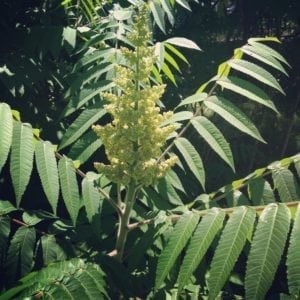
Staghorn sumac is in the Anacardiaceae, the family of plants which includes cashews and poison ivy. It’s a common roadside and greenspace volunteer. Once you learn to see its distinctive horn-shaped berry clusters, you’ll be able to recognize it at 60 miles an hour as you rush past on the highway. (From the passenger seat, of course! Botanize responsibly.)
Right now, the plant’s in flower. Soon, these upright spikes of green-yellow flowers will turn into tightly-packed, red velvet-covered berry clusters. Those berries are a tiny bit sweet and a bunch of sour. You can make sumac-ade simply by preparing a hot or solar infusion of the berries – perhaps together with some rosehips and orange peels – then lightly sweetening and chilling it. Serve over ice with a slice of lemon or lime. It’s just the thing for a sweltering July day, so keep it in mind when you’re celebrating interdependence on the 4th!
Even when we don’t drink them on ice, sour herbs are considered cooling. In the case of sumac, the herb can stabilize free radicals through the antioxidant capacity of its vitamin C and related bioflavonoids; in this way, it’s anti-inflammatory. It’s always best to get vitamin C from food sources as it’s better absorbed and more useful this way. Vitamin C is well-known as an essential nutrient, of course, but daily & varied intake of plant-sourced phytonutrients – antioxidants, immune-modulators, and other mediators of inflammation – is also very important for maintaining health over the long term.
Essential Za’atar Ingredient
Sumac is an important ingredient in one of our favorite spice blends, za’atar.
Za’atar usually consists of (1) any of several kinds of thyme, oregano, marjoram, or savory, (2) toasted sesame seeds, (3) a bit of salt, and (4) ground sumac berries. In this mix, the pungent and aromatic flavors of the thyme (etc) are grounded by the umami & oil of the sesame seeds, while the sour sumac berries provide a nice tart counterpoint. It’s excellent with heavy meats – beef, goat, lamb or mutton, dark turkey meat, sausages, etc. It’s also great stirred with a bit of olive oil and spread over bread or rolls.
From a medicinal perspective, this spice blend is rich with a variety of antioxidant compounds and is a nice way to boost the anti-inflammatory potency of your food. Spice it like you mean it: as I always say to my clients, “don’t eat boring food!” Regular consumption of strong-flavored spices is a good way to keep your body healthy.
You can easily make your own za’atar by combining these ingredients in various proportions, and feel free to add other herbs as well! A touch of garlic and black pepper is a good place to start, but consider sage, rosemary, or monarda too – or for some local wild food spice, perhaps spicebush or garlic mustard.
Dry Out & Tone Up
Sumac is a drying and tonifying herb. Its drying nature shows up primarily in its strong diuretic action, while its tonifying effects are apparent once you taste the astringency of the plant – especially the leaf.
As a diuretic, sumac leaf moves deep, stagnant water out of the body, reducing edema and water retention. It’s helpful for swollen tissues and varicose veins, too – especially when combined with a good long walk and some deep stretching! Move your fluids!
When taken as a tea or tincture, the astringent tannins in the leaves can counteract diarrhea, profuse mucous discharge, and other damp flowing tissue states. These could be occurring in the intestines (as diarrhea with slimy loose stools) or the lungs (as a cough with copious postnasal drip and phlegm in the lungs). Sumac leaf tincture is a good addition to your first aid kit.
Topical applications of the leaf can fight fungal skin infections, especially when these have been acquired in a moist location – like a communal shower at the beach or pool. They’re also helpful for oral health, tightening up spongy gums and shrinking canker sores.
But don’t count the berry out yet! As a sour draining herb, and like many berries, sumac berry infusions or tinctures can help with both the outward expressions of diabetes (fluid stagnation and edema) as well as the underlying causes (insulin resistance). In this regard it is perhaps most similar to schisandra berry (another astringent, sour, metabolic/kidney tonic herb). If you’re a fan of sour flavors, try the two of them together!
Run A Tight Ship
In a few different ways, sumac can also help with immunity. For one thing, its astringency does make it what we call a mucous membrane tonic. That means it tightens up the mucous membranes in the sinuses, respiratory tract, and GI tract – it “battens down the hatches” so that they are more resistant to microbial and viral incursions. This can help as a cold & flu preventative, as well as lessening the likelihood of opportunistic fungal and bacterial infections.
The strong tannins in sumac leaf are also directly antimicrobial, so if a fungus or bacteria did creep through your defenses, a topical application of sumac will fight them off. In the sinuses, that’ll mean a neti pot or nasal spray. Some bacteria, like E. coli, also infect the gastrointestinal tract, so if you have a “stomach bug”, consider drinking a cup or two of sumac leaf infusion.
Aside from the tannins, sumac does contain some constituents known to be immune-stimulating, such as astragalin and betulin (also found, respectively, in astragalus and birch plants). Daily consumption of sumac berries can build resilience against a wide variety of pathogens – pair with elderberry to emphasize this aspect of sumac’s medicine: that’s a berry good immune booster!
What About Poison Sumac?
You may have been wondering about poison sumac this week! Poison sumac has white berries that droop down, smooth-edged leaves, and smooth bark. This distinguishes poison sumac from our Herb of the Week friend staghorn sumac, which has red, upright berries, saw-toothed leaves, and fuzzy bark.
Fortunately, poison sumac is also a fairly rare plant, and it only grows in very marshy or watery soils. So, if you’re not standing in muck and the tree you’re looking at has upward-pointing flower/berry clusters, you can be sure you’re safe!
Want to learn more about herbs that can make your life better? Check out our Materia Medica program – it’s a complete herbal toolkit to keep you healthy and strong!
1 Comments
Leave a Comment
You must be logged in to post a comment.

Join our newsletter for more herby goodness!
Get our newsletter delivered right to your inbox. You'll be first to hear about free mini-courses, podcast episodes, and other goodies about holistic herbalism.

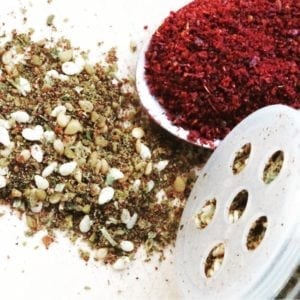
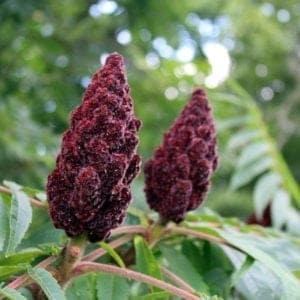
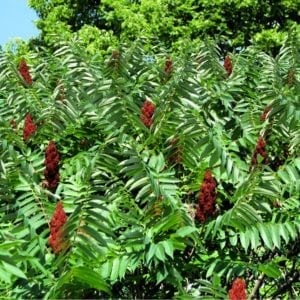
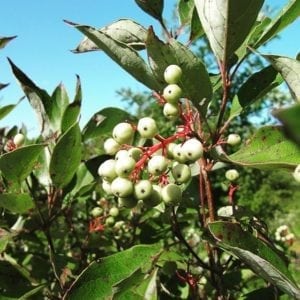
[…] discussed include: loosestrife, elderberry, ground ivy, mullein, boneset, sumac, goldenrod, st john’s wort, japanese knotweed, catnip, & blue […]